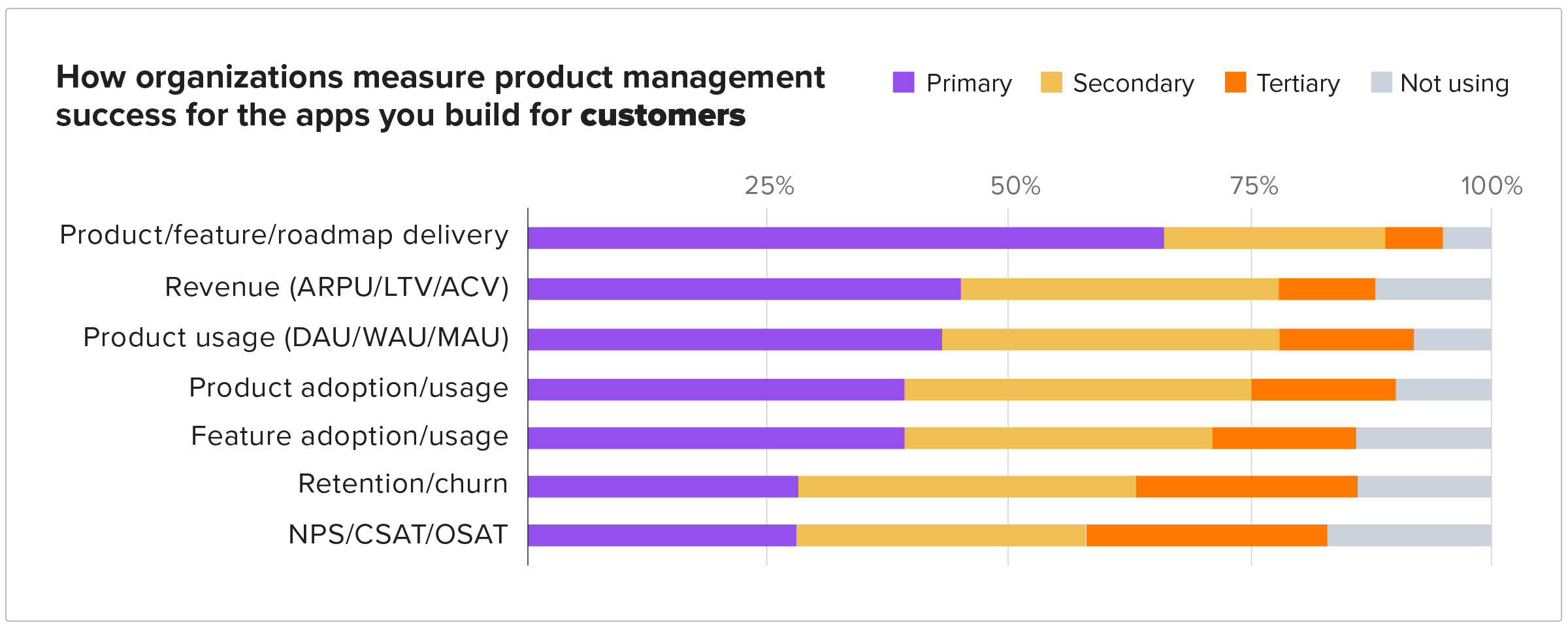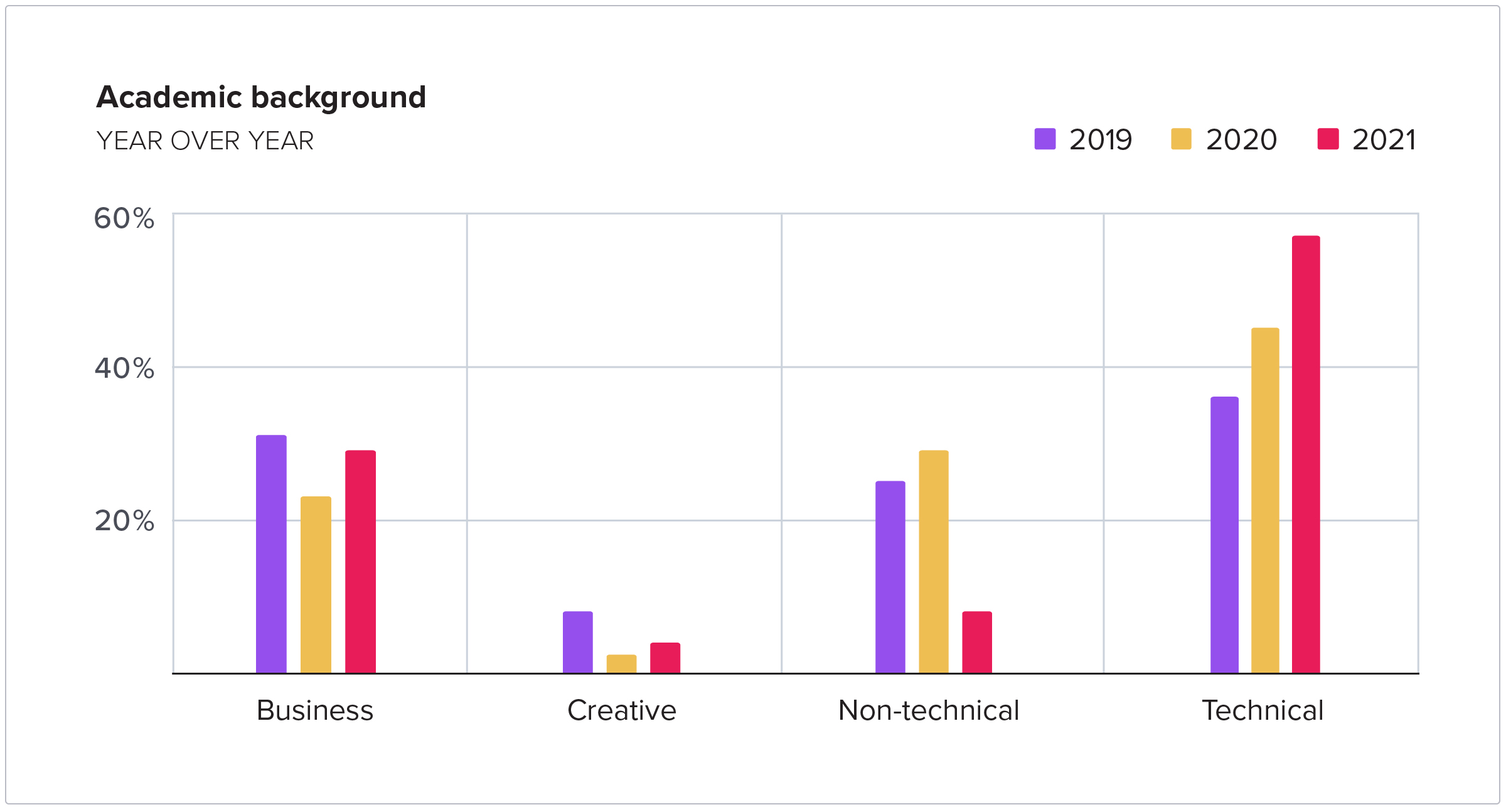The product management discipline is always changing, largely due to the fact that many organizations are turning to the product itself (and those who manage it) to drive the direction of the business. In our annual State of Product Leadership report, we survey product leaders around the world in order to take the pulse of the industry and examine this evolution of the product manager (PM) role.
This year, we saw some key shifts in areas of responsibility and success metrics that allude to a larger phenomenon that’s at play. Product pros are becoming more strategic and revenue-focused–but they aren’t losing their technical roots.
Here are five ways the PM role has changed year over year:
1. A newfound focus on delivery
Product managers have a lot of metrics at their disposal to measure success. The question is: which is the most important? This year, the top primary success metric was product/feature/roadmap delivery, with 67% of product leaders using it to measure success for customer-facing applications. Compare this with last year when only 39% of respondents listed it as a primary success metric, making it the least common of the seven options.

This increase could be due to a variety of factors, but one that comes to mind is the heightened need for PMs to deliver on what they promise. During a year filled with uncertainty due to impacts from the pandemic, organizations relied on their product teams to build with the customer in mind–often working with tight deadlines and sudden shifts in priorities based on changing customer needs.
2. Revenue as a primary success metric
Similar to delivery, revenue jumped up in importance as a success metric for product leaders. In our 2020 report, revenue was the fifth most common measure of success, whereas this year it landed the number two spot. As more companies become product led, the product team is gaining a seat at the table and product decisions are becoming synonymous with business decisions. As such, there is an acknowledgement that the product itself is tied to revenue, and is even a mechanism for revenue-related activities like expansion and cross-selling.
3. Increased responsibility for vision and strategy
It’s not surprising that product managers’ responsibilities evolve over time. As the market changes, businesses identify new growth paths and ultimately, new needs from the product. This year, product leaders ranked product vision/strategy as their top area of responsibility, with 21% saying they are responsible for it. Only 13% of respondents in 2020 could say the same, and product vision/strategy was the sixth-highest area of responsibility. Knowing that measuring product success via revenue also increased, this insight makes sense. As product becomes more central to business decision making, product managers themselves are more involved in strategic conversations and setting the vision for the product as a whole.
4. PMs are increasingly technical
The product manager role is unique in that it blends technical expertise and business acumen. This year, though, we saw the continuation of a trend dating back to 2019–product leaders are increasingly likely to come from a technical academic background.

This also relates to another data point from the 2021 survey. When asked how they make roadmap decisions, 63% of respondents said they are data-driven in some capacity (either very data-driven, data-driven, or slightly data-driven). Although this is more correlation than causation, it’s interesting to note that an increasing number of product leaders have technical backgrounds, and a majority of them also use data to make decisions. At the very least, this background surely makes them well-suited to work with data on a daily basis.
5. Digital transformation is the new north star
There’s no doubt that digital transformation is top of mind for nearly every company today. As such, areas of responsibility that were once high-ranking for PMs have taken a backseat to these efforts.
For example, in our 2020 report, 20% of product leaders said they were responsible for product positioning/messaging, and that number drops to 15% in 2021. Similarly, customer education was the fourth-highest area of responsibility in 2020, and didn’t even crack the top ten for 2021. This year, digital transformation came second to product vision/strategy as the top area of responsibility, with 20% of respondents saying they are responsible for it at their organizations. Time will tell how long this trend lasts, but it’s clear that for now, digital transformation is the job of product teams around the world.


